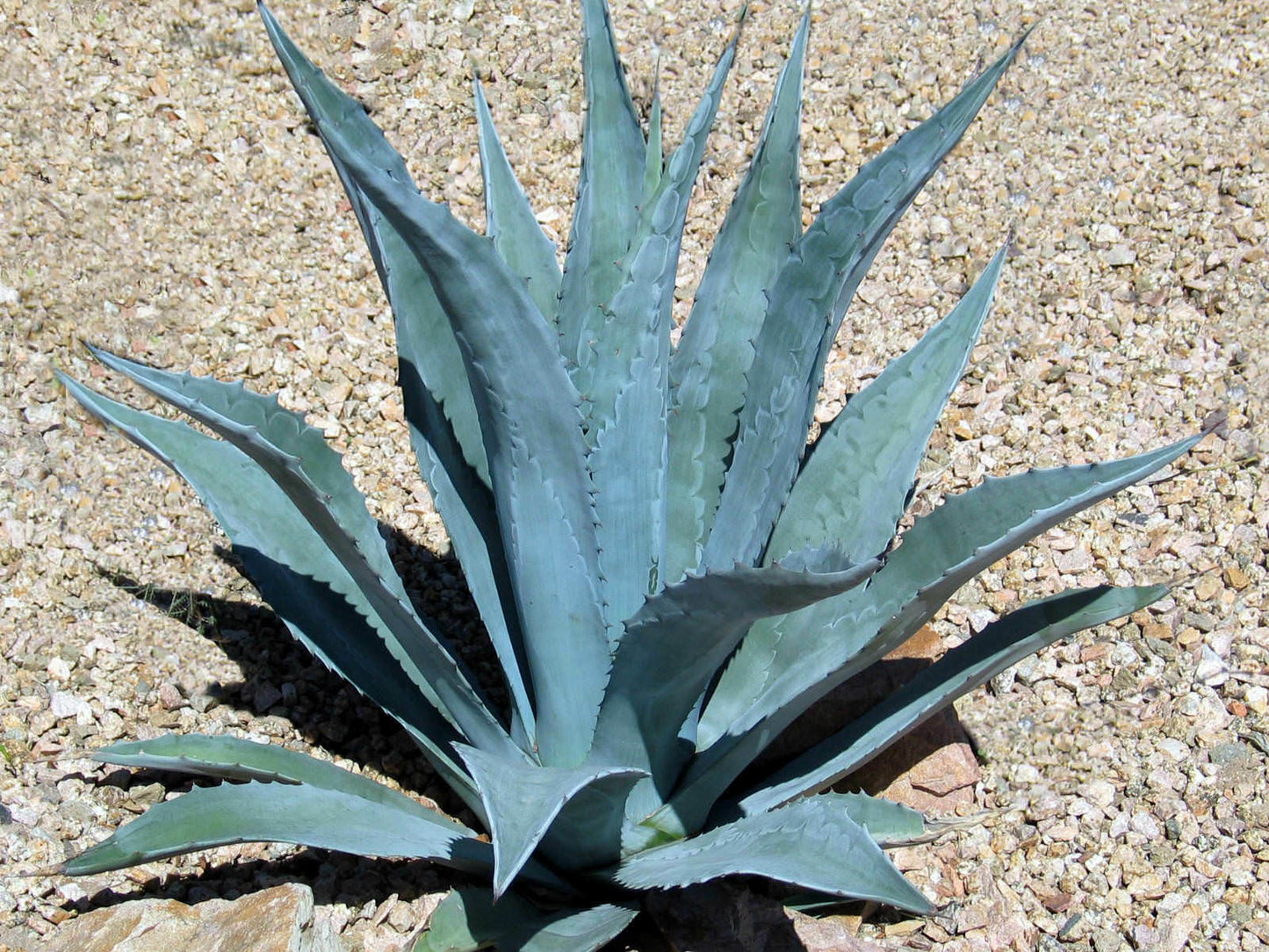speedy-seeds.co.uk
Agave Americana (Sentry/Century Agave) | 15+ seeds
Couldn't load pickup availability
|
Please find for sale 15+ seeds for Agave Americana more commonly known as Sentry plant Century agave or American Aloe. Hardy to most of UK, this plant makes a stunning structural piece to any garden or patio.
PLEASE NOTE: ALL ORDERS RECEIVED BEFORE 8PM (MON-FRI) WILL BE DISPATCHED SAME DAY SAVE PACKAGING MATERIALS - SEE OTHER INTERESTING & UNUSUAL SEEDS & PLANTS INSTRUCTIONS - TO SAVE PAPER I NO LONGER SEND OUT WRITTEN INSTRUCTIONS TO CUSTOMERS. INSTRUCTIONS ARE BELOW SO PLEASE BOOKMARK THIS PAGE. FEEL FREE TO MESSAGE ME WITH ANY GROWING QUESTIONS. Agave Americana is a beautiful, highly architectural species, regarded by many as an indoor or seasonal plant for growing outdoors in summer. It eventually forms an enormous rosette of stiff, dangerously pointed leaves. It used to be thought that the plant takes 100 years to flower - hence its "Century Plant" name, but this is a myth, it actually just takes just 8-30 years!
The plant should be grown in well-drained soil in full sun. When mature it will be able to cope with cold and frosts provided it’s protected from winter wet. Young plants will need extra protection. Alternatively grow in a large container that you can move indoors in autumn.
They are also very attractive as young plants in pots - see the second picture - so this is very much a plant for life!
Germination Guide
Olly's General Guide to Seed Sowing!
I love sowing seeds and it runs in the family - dad, grandad and finally my great-grandad for whom the hobby helped him get over his experiences in the Great War. I still get a big kick when I see the first seedling poking through from a new plant that I have never sown before or been successful at. However, even the most experienced gardeners draw "blanks" from time to time. Whilst I sow all the seeds that I sell so I know that they are viable, some are trickier than others and problems can arise so here are some tips to make "blanks" few and far between:
1) Dont Rush! Tempting though it is when that packet arrives in the post to simply bung the seeds in some compost!
2) Google and Youtube are your friends! Take some time so see the methods other people use to germinate the seed.
3) Think Nature! What conditions do seeds face? For example a seed from a tropical plant will fall to the warm, wet and dark jungle floor. A seed from the mountains of Europe will fall to the floor in Autumn, then have to endure months of freezing temperatures before germinating in the spring. So as growers, what we are trying to do is to simulate the conditions that the seeds will naturally experience and there are plenty of tricks that can be done to short cut the processes somewhat.
4) Good compost pays dividends . The best investment you can make is to purchase three bags - one of potting compost, one of vermiculite and one of horticultural sand. With these three bags I can make up whatever soil type a particular seed likes (although for most seeds I find a 50/50 mix of compost and vermiculite works just fine)
5) Rot is your enemy. The single biggest danger to seed germination is rot - either before or after "damping off" the seeds germinate. To reduce the risk, ensure you have good free draining soil mix and that it is moist but not wet. Unless the seed variety absolutely requires it I prefer NOT to cover my seeds trays with plastic bags, Whilst germination is often faster this way, it greatly increases the risk of rot. I prefer to place my seed trans inside a watertight plastic tray and water from the bottom - airflow over the surface reduces the risk.
Any problems? Don't rush to Feedback - message us first and we will get it sorted quickly!
|
Materials
Materials
Shipping & Returns
Shipping & Returns
Dimensions
Dimensions
Care Instructions
Care Instructions






Image with text
Pair text with an image to focus on your chosen product, collection, or blog post. Add details on availability, style, or even provide a review.
-
Free Shipping
Pair text with an image to focus on your chosen product, collection, or blog post. Add details on availability, style, or even provide a review.
-
Hassle-Free Exchanges
Pair text with an image to focus on your chosen product, collection, or blog post. Add details on availability, style, or even provide a review.






